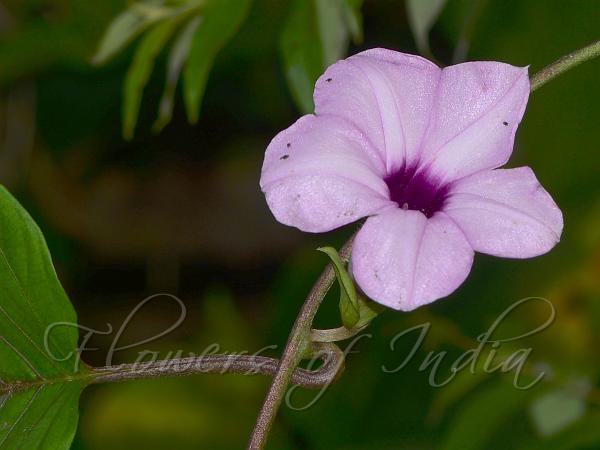|
| Bose Silverweed |
|

|

| File size | 442871 |
| Original date | 10/30/17 4:43 AM |
| Resolution | 6000 x 4000 |
| Flash | Flash fired, return detected |
| Focal length | 90.0mm |
| Exposure time | 1/250s |
| Aperture | 6.3 |
| Focus Distance | |
| Metering Mode | Spot |
| Camera make | NIKON CORPORATION |
| Camera model | NIKON D7100 |
| Sensor type | OneChipColorArea |
|
|
|
|
Photo: |
Botanical name: Argyreia boseana Family: Convolvulaceae (Morning glory family)
Bose Silverweed is a woody perennial herb with stems
hairless or velvet-hairy. It is named in the memory of Sir J.C. Bose.
It has some similarity to the East Himalayan
Hooker's Woodrose. Leaves are
ovate-heart-shaped, up to 30 x 24 cm long, often broader than long,
hairless, blunt and apiculate. Leaves have 8-14 pairs of nerves.
Flowers are borne in leaf-axils, 1 or 2 or more flowered.
Flower-cluster-stalks are as long or longer than the flower-stalks,
hairless or softly hairy. Sepal cup is tubular, 1.8-2 cm, sepals
unequal. Flower tube is 5-9 cm long, broadly funnel-shaped, pink,
hairless, limb 7 cm across. Stamens are unequal ovary hairless. Floral
bracts are up to 6 x 1.6 cm. Capsules are spherical, berry-like, 1.6 cm
across, leathery, hairless. Bose Silverweed is found in cultivated
lands, along road sides and railway lines, in Maharashtra and Gujarat.
Flowering: August-October.
Medicinal uses: Stem is used in healing of
wounds. Paste of the stem is applied on the wound, after cleaning of
the wound, until it gets recovered.
Stem is used in healing of
wounds. Paste of the stem is applied on the wound, after cleaning of
the wound, until it gets recovered.
Medicinal uses:
 Stem is used in healing of
wounds. Paste of the stem is applied on the wound, after cleaning of
the wound, until it gets recovered.
Stem is used in healing of
wounds. Paste of the stem is applied on the wound, after cleaning of
the wound, until it gets recovered. | Identification credit: Pramod Lawand | Photographed in Sakharpa, Ratnagiri, Maharashtra. |
• Is this flower misidentified? If yes,